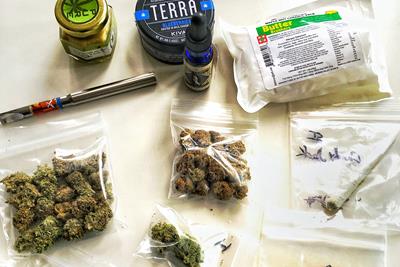
Friday May 19, 2017
 Education
Education
Ever since the passing of Amendment 64 and legalization of adult-use marijuana, Colorado has been pioneering the legal cannabis industry. Not only do other states turn to Colorado for guidance on how to navigate the waters of legal marijuana implementation but also the federal government and, of course, the increasingly growing demographic of cannabis tourists and knowledge seekers.
The first legal marijuana purchases in Colorado occurred on January 1, 2014, setting the tone for the soon-to-be booming cannabis industry in America. Although cannabis businesses took off at an alarming pace, establishing a functional legal cannabis market has proven to be anything but speedy.
Quantity Limitations on Sales, AKA Marijuana Equivalencies
Because marijuana legalization created a brand new industry, there were many obstacles to overcome – and many that were overlooked – during the Marijuana Enforcement Division’s (MED) creation of laws and regulations. Because certain oversights were made by the MED in the initial release of laws and regulations, there have been a few edits and additions over the years to compensate.
Perhaps the most notable of those additions is the R 402 C.3 – Quantity Limitations on Sales, otherwise known as the marijuana equivalency law. This law was created pursuant to the mandate of House Bill 14-1361 (pdf), which required the Colorado Department of Revenue to establish “the equivalent of one ounce of retail marijuana flower in various retail products.” Essentially, the state of Colorado wanted there to be a more defined equivalence of flower, concentrates and edibles.
House Bill 14-1361 commissioned the Department of Revenue to contract a scientific study to determine what the equivalencies should be. From this authorization came the “Marijuana Equivalency in Portion and Dosage” study (pdf). Conducted by the University of Colorado, Leeds School of Business in partnership with the Marijuana Policy Group and BBC Research and Consulting, the study was “an assessment of physical and pharmacokinetic relationships in marijuana production and consumption in Colorado.”
Essentially, several researchers, scientists and authors worked together with the MED to determine the best way to equivocate marijuana products. Enough of the boring details though, if you want to stay on the right side of the law in Colorado, here’s what you need to know.
Marijuana Equivalencies Explained
If you’re a resident or visitor of Colorado looking to purchase marijuana, it’s important to understand that not only do you need to know your possession limit but also your purchase limit. Knowing that you have one ounce to work up to when choosing items in a dispensary is no longer universally applicable, as concentrates and edibles both now have different maximum quantities.
Effective October 1, 2016:
-
one (1) ounce of retail marijuana flower = eight (8) grams of retail marijuana concentrate
-
one (1) ounce of retail marijuana flower = eighty ten-milligram servings, or 800mg, of THC in retail marijuana products/edibles.
An easy way to remember and add up these equivalencies is to simplify the equation. The limits of edibles and concentrates are both divisible by 8 eight, which happens to be a great number to use when thinking about an ounce of flower.
As you may know, one ounce of marijuana flower is 28 grams. A common measurement and purchase quantity of marijuana is 1/8, or 3.5 grams. That means there are eight eighths in one ounce of marijuana flower. Knowing this basic math allows you to simplify equivalencies between products down to:
1/8th marijuana flower = 1 gram concentrate = 100 mg edibles.
From here, adding up products to determine your limit is easy. All you need to do is visualize the products in dividends of eight. Think of all the products as fractions that make up the whole. Since 8/8 equals 1 ounce in this instance, you can place all numbers over 8 to reach the whole. For example, if you wanted to purchase three grams of concentrate, four eighths (14 grams) of flower and 100 mg edibles, placing all products over 8 would look like this in equation-format:
3/8 (3 grams concentrate) + 4/8 (4 eighths flower, or 14 grams) + 1/8 (100 mg edibles) = 8/8 (1 ounce)
The above equation depicts a transaction in which the customer would have reached their total purchase limit. We’ve found this to be the easiest way to explain and think about adding between products but if you’re still unsure, you can always ask your budtender for more help.
While the purchase limits may have changed, please be aware that possession limits have not. Pursuant to Amendment 64, all adults 21 years of age or older are able to possess “one ounce or less of marijuana.”
That means while you are able to only purchase eight grams of marijuana concentrate at a time, you are still able to possess up to 28 grams of it. And while you are only able to purchase 800 mg of edibles per transaction, you are still able to possess 28,000 mg – or 28 grams – of THC in the form of edibles.
What do you think of the marijuana equivalency laws in Colorado? Are they accurate? Comment below!








